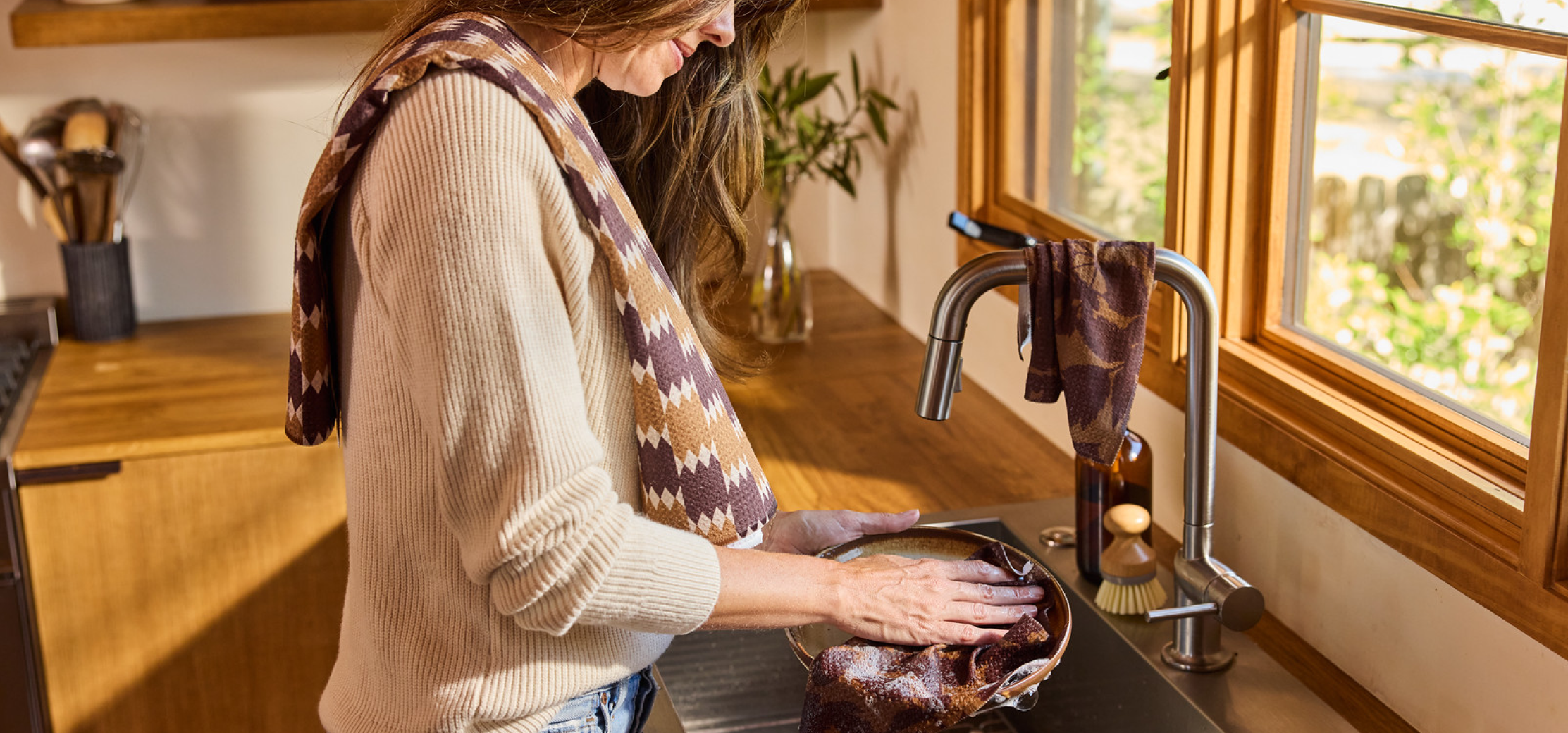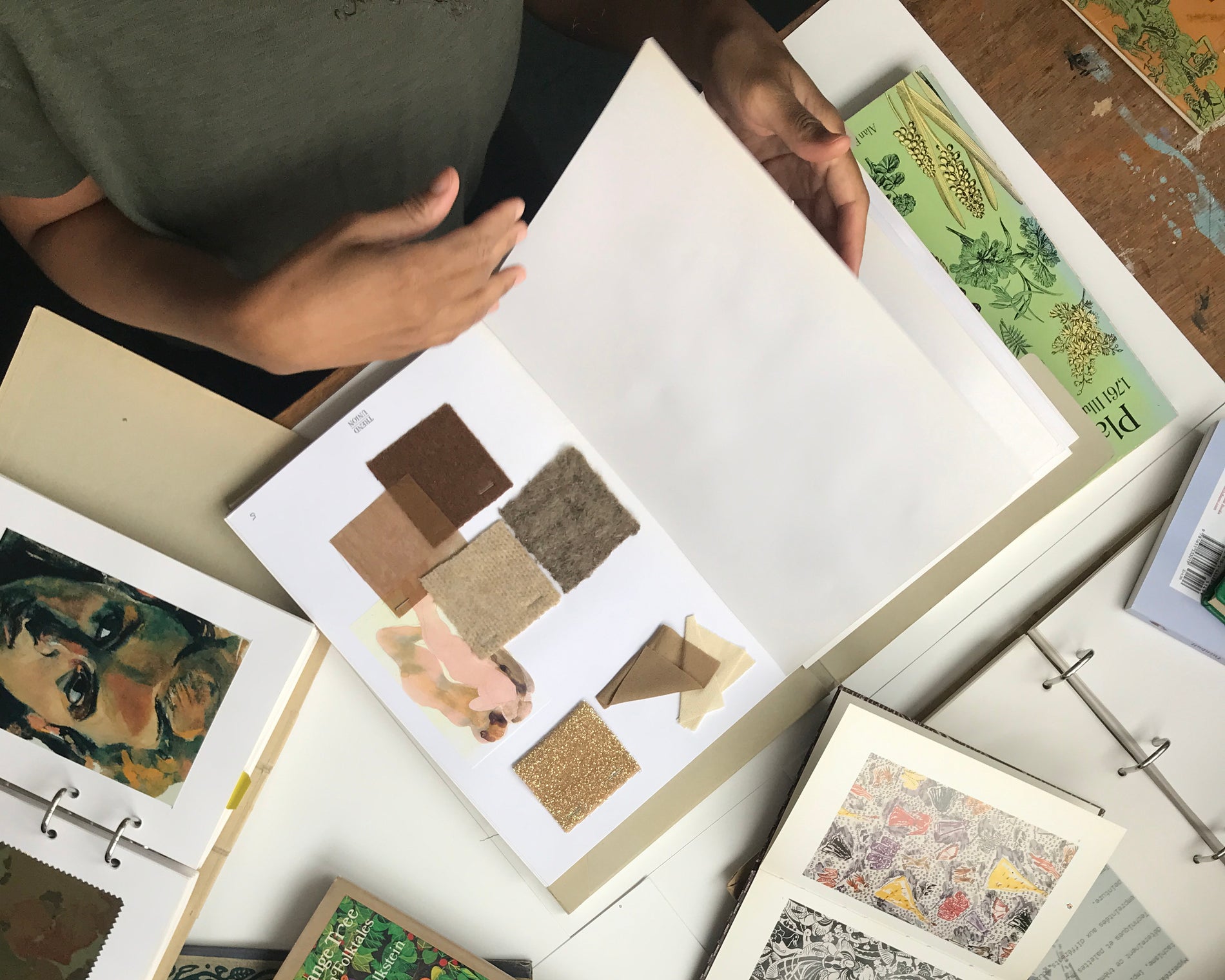They say variety is the spice of life, and that’s why we love getting to work with a growing team of artists with unique and eclectic perspectives and aesthetics. This month, we’re checking in with Marteen Allen, founder of Studio Jeannot.
In her latest Geometry Collab, Marteen takes neutrals to a new level, weaving in prints that carry strong geometric lines and whimsical curves. Settling into her own unique aesthetic, we sat down with this New York City artist to find out how her work has evolved – and where she’s headed in the future.
Tell us a bit about why or how you became an artist.
Whether through education, work or recreation, artmaking has been a part of my life since childhood. As a young artist, I studied fine art, painting and conceptual art, all of which laid the foundation for what followed.
I began my professional career as a graphic designer after graduating from university. Although I developed an insatiable passion for fonts and typesetting, I sought out other opportunities to merge my fine art background with design. My search led me to textiles. Initially, I took a few evening classes, but decided to return to school to study textiles full time to study textiles.
This discipline has allowed me to unite traditional artmaking with technical design.
What inspires you on a daily basis?
I live in New York City and am bombarded with tons of information all the time. There isn't a lack of diverting inspiration here. For me, finding quiet time is most effective for helping me pinpoint what's inspiring, make interesting connections and work out design problems. I get quiet time every morning by going for a walk in my neighborhood. As my body moves, so does my brain.
Tell us a bit about your creative process and how you work.
When I work with a client, I begin with a concept and research. I combine influences from books, movies, fine art and textile archival materials. I love looking toward the past and creating a mix of influences to create something original. From there, I'll flesh out sketches. After I've landed somewhere with initial sketches, I'll move to the computer to perfect the design, rendering and technical aspects.
What keeps you motivated to create?
When I'm not working on a project for a client, I enjoy time in the studio to mess around and experiment. In a way, it's like a workout to keep my design muscles in shape. Some ideas are added to my licensable works library. Other ideas become studio products.
Creating is something I feel compelled to do. I suppose it's cathartic. When I release the ideas and give them life, I feel better.
Who or what are your biggest influences?
Design and craft movements like Wiener Werstätte, Art Nouveau and Bauhaus make up a lot of my design influences. While each of those movements is quite visually different from the others, their incorporation of artistic principles into everyday objects and architecture is a focus I share.
For work/life ethos and bodies of work I look to Stefan Sagmeister, Faye Toogood and Ini Archibong. Throughout my career, I have looked to each of these to help me define myself as a designer and determine how design fits into my life and what I hope to achieve.
For interiors and architecture, I love Commune Design, Roman and Williams Guild, and Studioilse for their harmonious blend of modernism and natural elements, character and craftsmanship.
For textile houses, I love Pierre Frey's diverse range of patterns, quality materials and history.
My personal design aesthetic reflects a fusion of art and craftsmanship.
How would you describe your personal design aesthetic?
Functional beauty and timeless appeal. For pattern specifically, I gravitate toward texturally rich and abstract graphics. I love geometric shapes, clean lines, a sense of balance and handcrafted techniques.
What draws/excites you about Geometry’s products?
Having worked in the textiles industry for the last 10+ years, I've seen that the industry generally doesn't have a great track record for progressive ideas about how to improve its impact on the environment. The largest draw about Geometry is that they feature art and design with products that are inherently sustainable and environmentally responsible from beginning to end.
How would you describe your collection with Geometry?
Our collection explores abstract markings and the natural world versus the manmade world. This five-piece collection draws inspiration from water currents, woodgrain, prehistoric marks and Tetris-inspired tiles. Lines and grids reminiscent of intricately crafted architecture sit alongside dynamic organic forms and stylized painted techniques.



